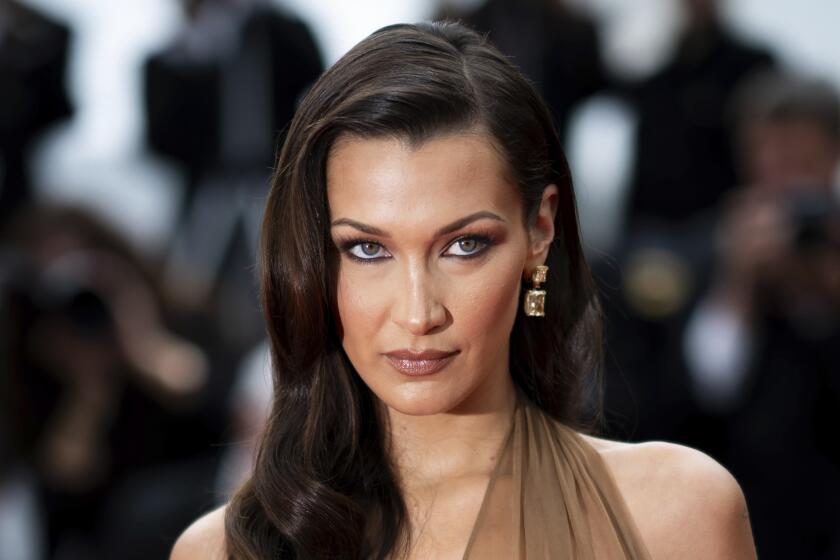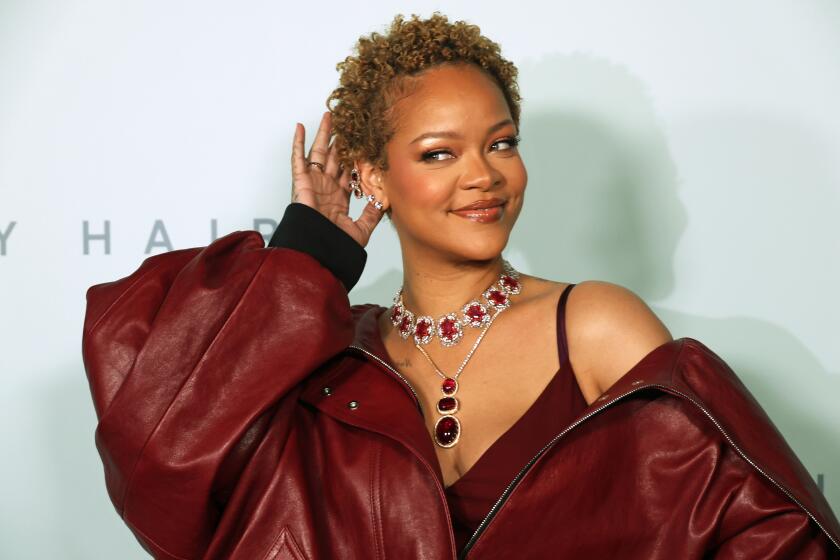Vanderbilt Likes Author Label
Anyone who ever squeezed into a pair of Gloria Vanderbilt jeans may be surprised to learn that the woman behind one of the most ubiquitous designer labels of the ‘70s adamantly refuses to be labeled a designer.
This is especially true now that she has written a new book, the autobiographical “Black Knight, White Knight” ($18.95, Alfred A. Knopf).
She is a writer and an artist first, she said recently during a promotional tour that brought her back to the city where she spent some of her teen-age years and met her first husband.
“I have a very clear view of what I want the for the rest of my life,” Vanderbilt said, sitting erect in an armchair in her hotel suite and dressed in an immaculately pressed linen suit from Giorgio Armani.
“I want to write and paint, and there are certain--I call them marketing things--I do.”
Of course, those certain “marketing things”--the jeans, the sportswear, the scarfs, the sheets, the greeting cards and even the tofu dessert--are no doubt what the public associates her with first, because many people probably still have a Gloria Vanderbilt product hanging in their closets.
Yet during an interview, Vanderbilt was so fuzzy about her past ventures in commerce that a dime-store psychoanalyst might call it denial. Vanderbilt wasn’t even sure whether she was still currently involved in the fashion business. As for the jeans, she said, “I don’t even think they’re available anymore. I don’t know.”
There’s no doubt that writing is a subject that lights up her large brown eyes, now framed by girlish bangs. “Black Knight, White Knight” starts where her first book “Once Upon a Time” left off, at age 17, long after she was the subject of a sensational custody trial.
She has left her “Aunt Ger,” Gertrude Vanderbilt Whitney, and joined her mother and “Aunt Toto,” Thelma Furness, in their rented house on Maple Drive in Beverly Hills.
She meets movie stars, dates Howard Hughes, marries and divorces agent Pat De Cicco and marries conductor Leopold Stokowski, but in time she begins “to feel smothered, lacking an identity of her own, trapped again,” as the book jacket puts it so neatly.
Vanderbilt said that writing about that period of her life was a liberating experience. As with her first book, she penned it in the voice of a young girl.
It is a distinctive style that requires “projecting myself back into the time it was happening,” Vanderbilt said, “and writing it with the immediacy of events as they happened. That is the style and the act of it.”
Her memory for details--say, the color of flowers sent by a suitor--and emotions, is uncanny. “That’s what my gift is,” she said. Writing about herself as she was 40-plus years ago “was like becoming it instead of like remembering.”
Not having abandoned entirely her interest in business, there is also a new Vanderbilt perfume, called Glorious, available at the May Co., and she is packaging a gourmet food line, which will be in markets this summer.
“I really became a designer quite by accident. How I got into fashion is Glentex produced scarfs done from paintings of mine. That was the beginning,” she recalled.
Eventually, there was a “couture” clothing line, but: “Well, we flopped,” Vanderbilt said. “We had manufacturing problems. We had two collections. Then I started having a lot of licenses for various things. You know, blouses and so forth and so on, and that’s how the jeans came in.
“I’m not really interested in that anymore,” she said with finality.
Tony Papp has lived his life with a different sort of notoriety. His father is New York theater producer Joseph Papp.
Naturally, his father hoped he would follow in his footsteps. “I had some hints,” said Tony. “He said I should be a stage manager at one time. I think any son doesn’t want to be completely connected with his father. And I always wanted to do something creative.”
With his father’s backing, Papp opened last December a tiny jewelry shop, Tony Papp Gallery, which is filled with his designs and those of 20 other artists, in the Trump Tower in New York.
His designs are available locally at the new Sculpture to Wear gallery on Melrose Avenue. They marry classical jewelers’ techniques with contemporary designs, “soft” shapes that are juxtaposed with graphic checkerboard inlays or concentric circles broken by triangles.
Available in a variety of metals, such as silver, bronze, steel and brass with touches of gold, prices start at $150 for earrings, $300 for broaches.
And, yes, some of his father’s friends have become customers, including Kevin Kline, F. Murray Abraham, Betty Buckley, Mandy Patinkin and Kate Nelligan.
More to Read
Sign up for our Book Club newsletter
Get the latest news, events and more from the Los Angeles Times Book Club, and help us get L.A. reading and talking.
You may occasionally receive promotional content from the Los Angeles Times.




